・読者登録
・団体購読のご案内
・「編集委員会会員」を募集
橋本勝21世紀風刺絵日記
記事スタイル
・コラム
・みる・よむ・きく
・インタビュー
・解説
・こぼれ話
特集
・市民活動
・国際
・政治
・アジア
・入管
・人権/反差別/司法
・核・原子力
・環境
・文化
・欧州
・反戦・平和
・イスラエル/パレスチナ
・難民
・みる・よむ・きく
・アフリカ
・医療/健康
提携・契約メディア
・AIニュース


・司法
・マニラ新聞

・TUP速報



・じゃかるた新聞
・Agence Global
・Japan Focus

・Foreign Policy In Focus
・星日報
Time Line
・2025年12月03日
・2025年11月29日
・2025年11月28日
・2025年11月22日
・2025年11月20日
・2025年11月19日
・2025年11月17日
・2025年11月16日
・2025年11月15日
・2025年11月14日
|
|
2016年03月19日17時03分掲載
無料記事
印刷用
文化
共著「Rethinking Representations of Asian Women」(再考・アジアの女性をどう描くか)
アジアの研究者が共通のテーマで書いた「Rethinking Representations of Asian Women」(再考・アジアの女性をどう描くか)というタイトルの本があり、英語圏で発表されています。日本から伊地知紀子教授(大阪市立大学)も編集者の一人として参加し、また1つの章を担当しています。以下の紹介文は筆者の一人である伊地知氏によります。
「本書は、移動、分断、喪失、連帯のなかを生きるアジアの女性たちと彼女らに連なる人びとをめぐる表象実践と生活実践の実相を東アジア、東南アジア、南アジアの具体的な事例研究に基づいて明らかにしていくことを目的として編んだものです。執筆陣は、日本、ベトナム、台湾、モンゴル、カナダに住む総勢10名の文化人類学者、社会学者です。
本書に掲載した私の論文は、帝国日本の拡張にともなう済州島チャムス(海女)の生活圏の変容と操業内容の変化を社会経済史的に捉えたものです。小さな自慢は、おそらく海女を異文化理解や特殊技術保持者といった視点ではなく、社会経済史的側面から、資本主義の拡張や植民地支配、さらにグローバリゼーションと絡めて英語で論じたものは管見ではないだろうと思うことです。」
(<Imperial Japan and the Female Skin Divers(Chamsu) of Jeju Island, South Korea>
Today, it is quite rare to find female skin divers in regions outside of Japan and South Korea. Jeju Island, the topic of this chapter, is the leading region in South Korea for female skin diving. Studies on chamsu, the female skin divers of Jeju Island, commenced during the colonial period as a field of Japanese research on the Korean peninsula, and have since expanded to incorporate folkloristics, ecology, and geography as well.
This scholarship was later taken up in South Korea at the end of the colonial period, focusing mainly on aspects of physical prowess and social structure. Given that chamsu formed the economic nucleus of their region, maintaining the home and raising children, myths were
constructed on the Korean mainland about these “tenacious” women.
Behind this was the reality that there were no income opportunities for men on the island other than small-scale fishing and migration until the tourism industry was introduced in the 1980s.
Further, due to their unique method of fishing, chamsu received special attention for their peculiarities,” and were treated as mirrors reflecting both the history and culture of Jeju Island and were used to gain foreign appeal as well(Choa et al. 2006). From this interpretation, however, it is exceedingly difficult to envision the actual everyday life of chamsu.Taking historical dynamism into account, this chapter attempts to interpret the everyday life of chamsu who continue to migrate to Japan in search of work while closely examining their daily experiences.
These women have migrated overseas to dive as hired labor since the end of the nineteenth century. The Japanese colonization of Korea set the stage for this movement. While these circumstances forced many to dive, mainly along the Korean Peninsula and in Japan, we observed cases of those who remained in Japan for the long term in addition to those who returned to Jeju Island.
Chamsu’s labor migration to Japan halted briefly following the end of colonial rule, but continued domestically,as diving wages had become a main source of income. Until the liberalization of overseas travel in 1989, many traveled to Japan as stowaways, including those women who made a living as divers upon arrival.
Given the shrinking number of Japanese female divers
referred to from here on as ama and the great demand for highgrade shellfish, there are chamsu operating in Japan to this day.
As opposed to Jeju Island, where diving is possible only two weeks a month, Japan offers the chance to dive year-round by changing locations. These earnings continue to support their livelihoods upon traveling back to Jeju Island. In this way, chamsu lived in a socially and
historically charged environment in which they had to become “tenacious.”
Foremost, this chapter provides a general outline of the implementation of the market capitalist economy during the colonial period as well as the internal and external conditions of the Korean Peninsula’s liberation from Japanese colonization in 1945, which produced various environmental changes that forced chamsu to widen their sphere of action.
Further, through a specific example of chamsu whose labor migration to Mie Prefecture, Japan, is ongoing, this chapter considers the manner in which they have adapted to modifications in the postwar social structure that initially prompted their migration.)
■済州島からの訪問者 伊地知紀子(大阪市立大学教授)
http://www.nikkanberita.com/read.cgi?id=201601302249066
■【TV制作者シリーズ【(9)アジアを舞台に農と食、そして人生を撮る原村政樹ディレクター
http://www.nikkanberita.com/read.cgi?id=201002231352572
|
転載について
日刊ベリタに掲載された記事を転載される場合は、有料・無料を問わず、編集部にご連絡ください。ただし、見出しとリード文につきましてはその限りでありません。
印刷媒体向けの記事配信も行っておりますので、記事を利用したい場合は事務局までご連絡下さい。
|
|
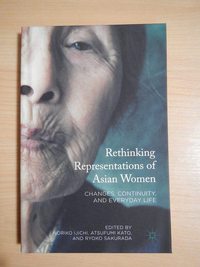
「Rethinking representations of Asian Women」(再考・アジアの女性をどう描くか)
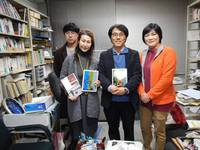
伊地知紀子教授(前列左端)。取材に訪れた済州大学校教育放送局の人々と。
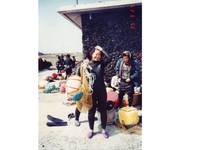
済州島に留学して、暮らした頃の伊地知氏。「私が村でチャムス(済州語で海女のことです)をしたときのもの」済州島は海女が多いことで知られている。
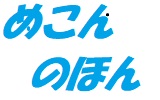

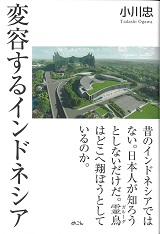
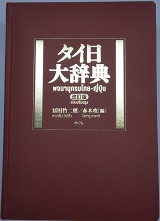
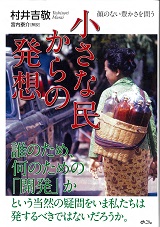
|


















